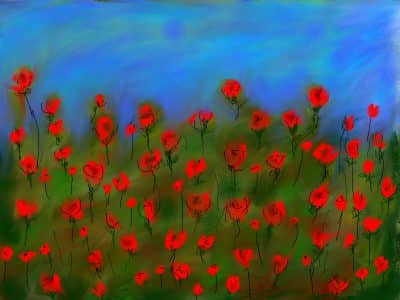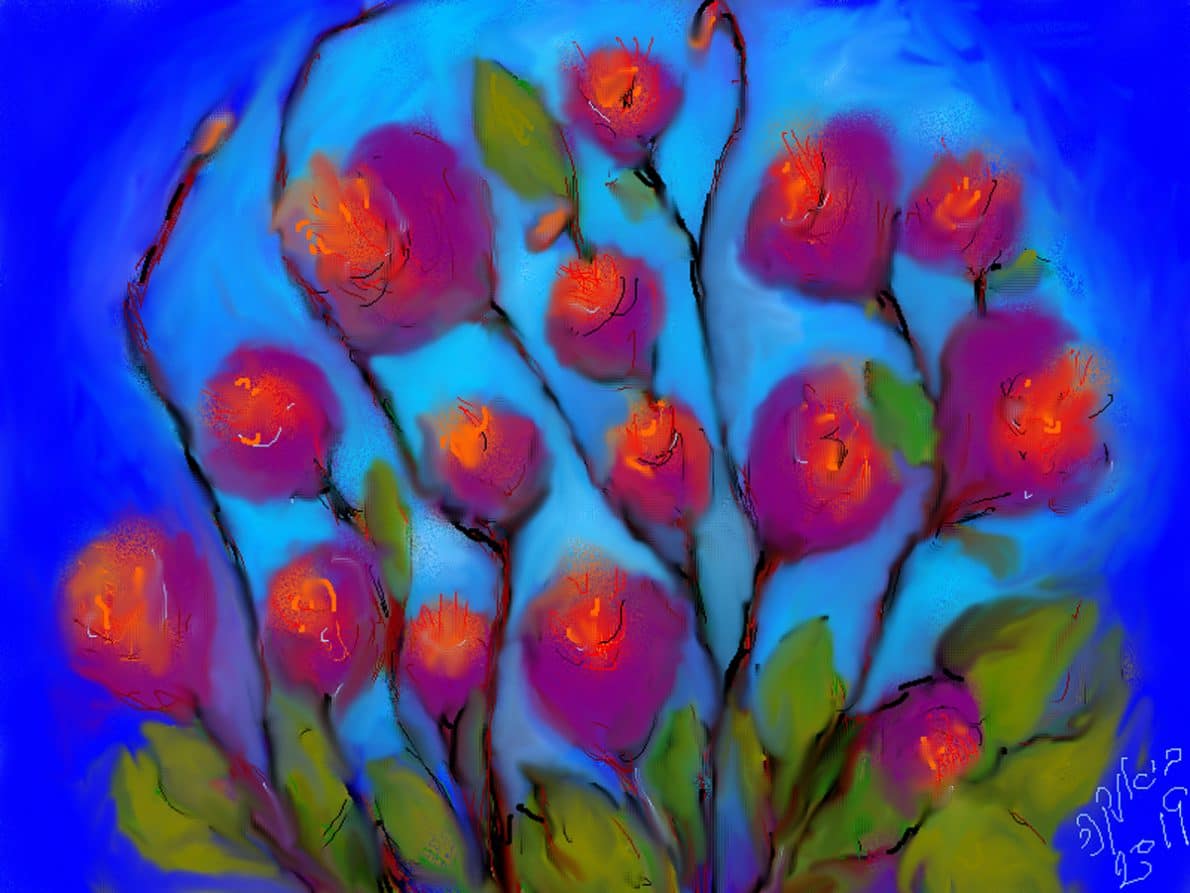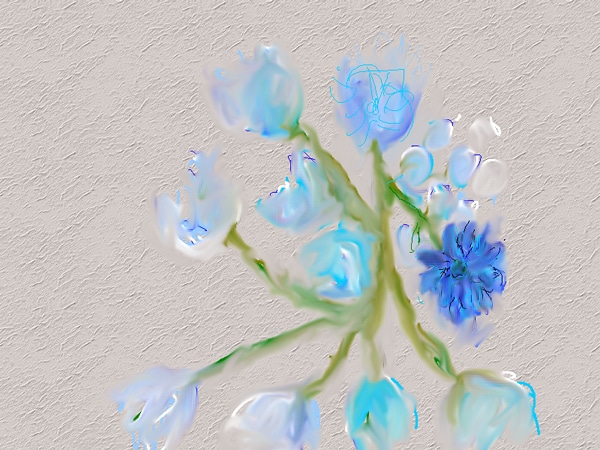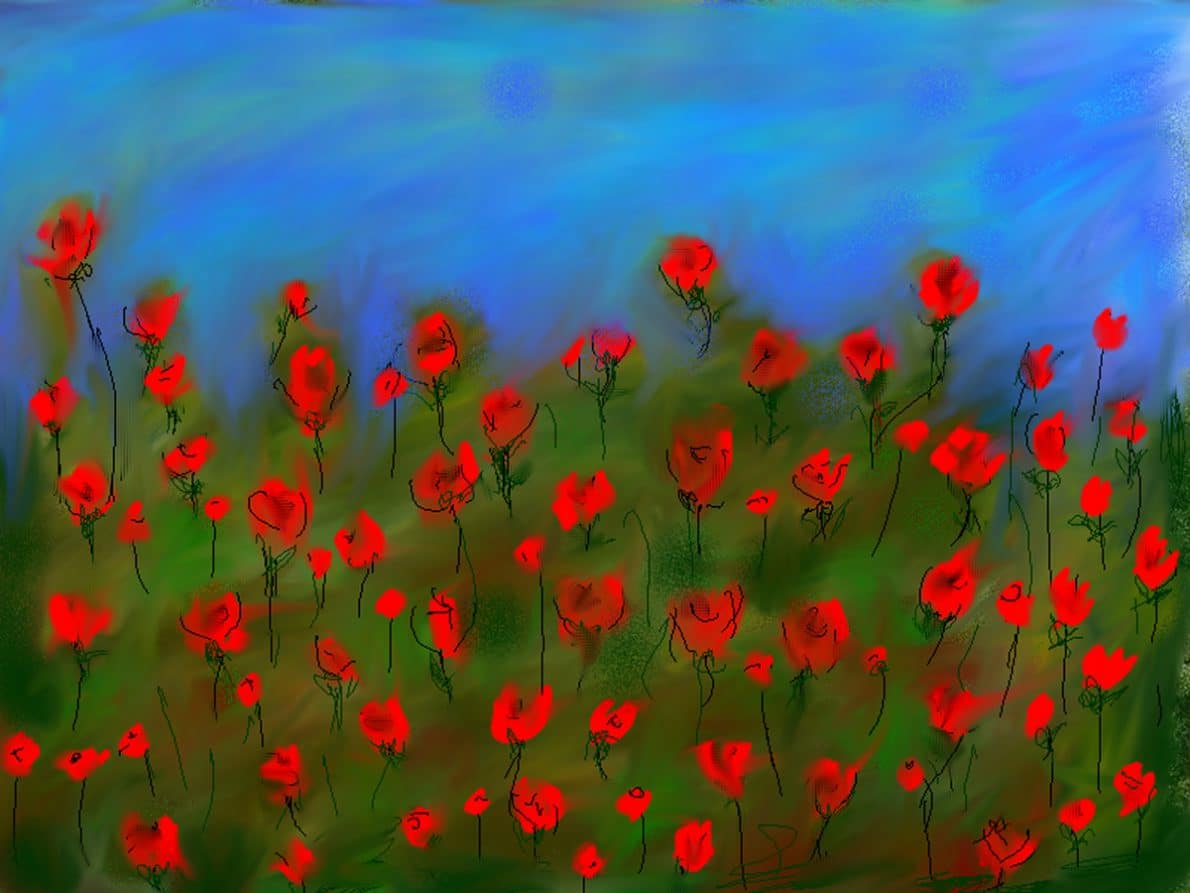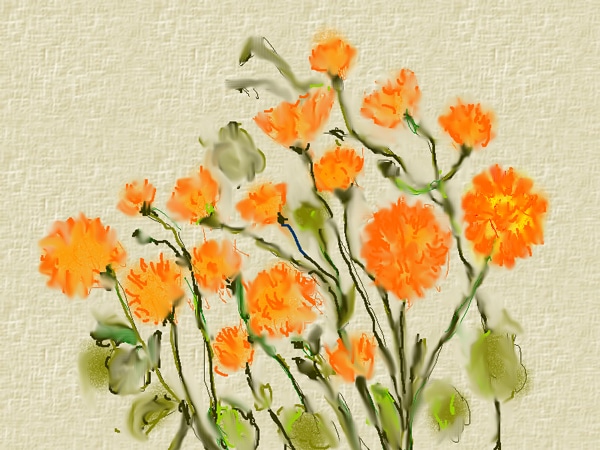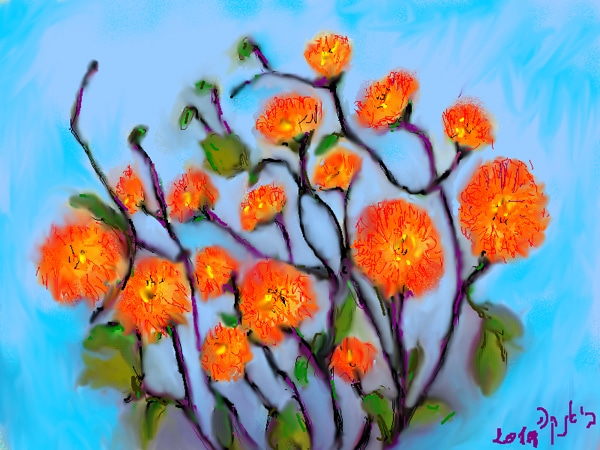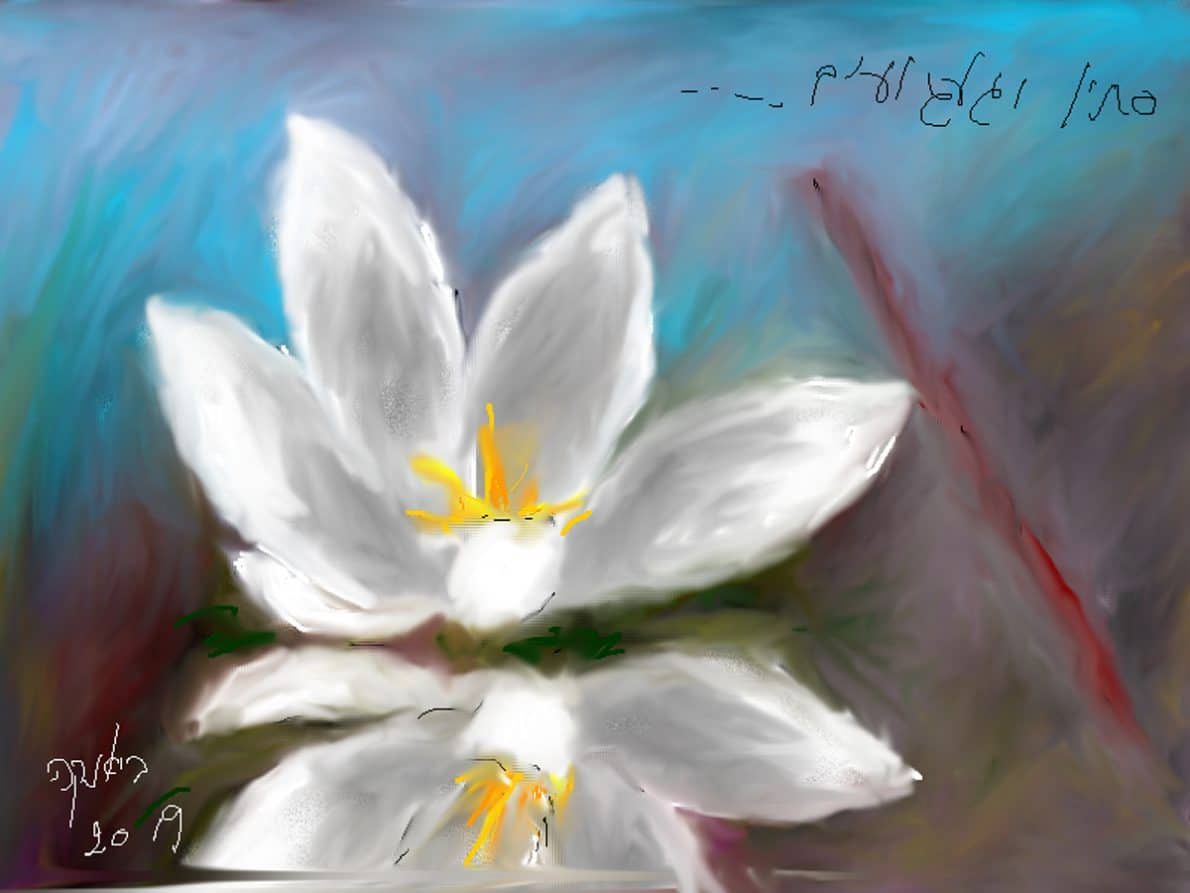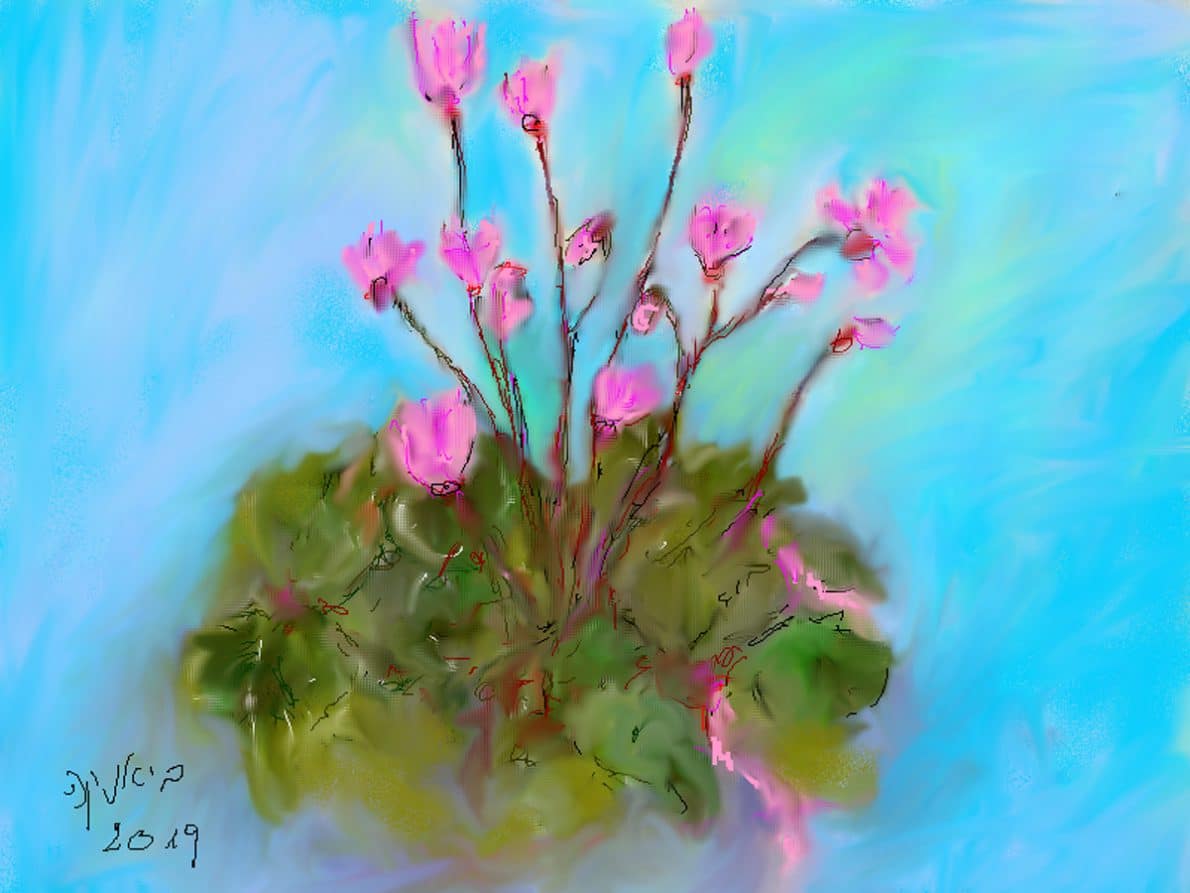The colourful flower paintings on display in the exhibition were all done last year. They are displayed together with several head paintings from a decade ago; both are recurrent motifs in Bianca Eshel Gershuni's work through the years. These highly colourful, expressive paintings hold a surprise - the physical presence of the means of painting is absent. We are looking at prints, from digital files, of paintings created with software. They are handmade but do not involve paper and brushes.
Bianca Eshel Gershuni (b. Sofia, Bulgaria, 1932), is an artist working in a wide range of mediums, who started to stand out in the art field in the 1960s. Although she studied painting and sculpture at the Avni Institute in Tel Aviv, her artistic language was formed through jewelry-making, which she had taught herself. Her original and unique approach was evident early on, in the sculptural nature of the pieces and her interweaving of fine materials, such as gold and precious stones, with cheap materials uncommon in the world of jewelry-making – among them plastic, colorful feathers, and tiny dolls. She was daring, and broke down barriers between art and craft, expert work and childlike playfulness, beautiful and too-pretty kitsch, personal stories and universal symbols – which grew, in the 1980s, into the introduction of large, highly detailed sculptures and reliefs. These works received broad acclaim and were shown in many exhibitions, among them a solo show at the Tel Aviv Museum of Art in 1985. The current exhibition presents one work from that period, from the collection of the Negev Museum of Art.
Flowers have been present in Bianca Eshel Gershuni’s from the start in jewelry, sculptures, and paintings. Different cultures have adopted nature’s blooms in various manners: as ornaments for the home or the body, as carriers of symbolic meanings in the contexts of love, blessing, and life, while also representing the transience of life, decline, and death. In Eshel Gershuni’s work, flowers often assume all of these roles. The flower paintings in the exhibition reflect her love of their beauty, as if they were precious pieces of jewelry, and her yearning for nature that in recent years has become just a memory since she no longer leaves her home. Some of the flowers look similar to their appearance in life – a field of anemones, cyclamen in bloom – while others are free invention, such as a plant bearing flowers of different colours. Occasionally she adds a title; for example, “bloom on a rainy day,” which alludes to the role of the flower, as well as the paintings of it, in lifting the mood.
Heads are also prevalent in the painting and sculpture work of Bianca Eshel Gershuni’s, often carrying features that can be identified with hers. These are not necessarily portraits done from direct observation through a mirror, as is common in this genre. She does them from memory, the memory of the artist’s face in her own eyes, drawn– as in the paintings shown here – with eyes closed, and once with her mouth open in a scream. Art’s most valued organs – the eyes – are shown as shut: the gaze is turned inward. The digital paintings of heads were printed and displayed in 2010 at the Herzliya Museum of Art, on the occasion of the artist’s receiving the Ministry of Culture Award for Lifetime Achievement.
Bianca Eshel Gershuni embarked on digital painting when her son, Uri, gave her his old computer, connected her to the Internet, and encouraged her to take part in today’s world. The technician who taught her how to use the computer also showed her how to draw with Paint software. She went on to educate herself, acquiring skills and control of the medium. In many ways, this is a proper painting, with emphasis on drawing, composition, and colour. Different from painting on paper, here she can save various stages of the process in separate files before she is finished; there are two examples of this in the exhibition. In recent years, computer painting engaged Eshel Gershuni daily, and she has been very productive. She shares her work with friends, sending them paintings as holiday greetings or just as a daily mailing. One of her close friends, the poet Mordechai Geldman, who wrote a book about her work (In the Silver Mirror: Bianca Eshel Gershuni, Hakibbutz Hameuhad, 2007), has been posting the paintings on Facebook, thus exposing her work to broad audiences while remaining in the digital format. Printing affords them an added dimension, like a photograph or a print: a traditional painting living in contemporary technological reality.
Curator: Dalia Manor
Assistant curator: Nirit Dahan

